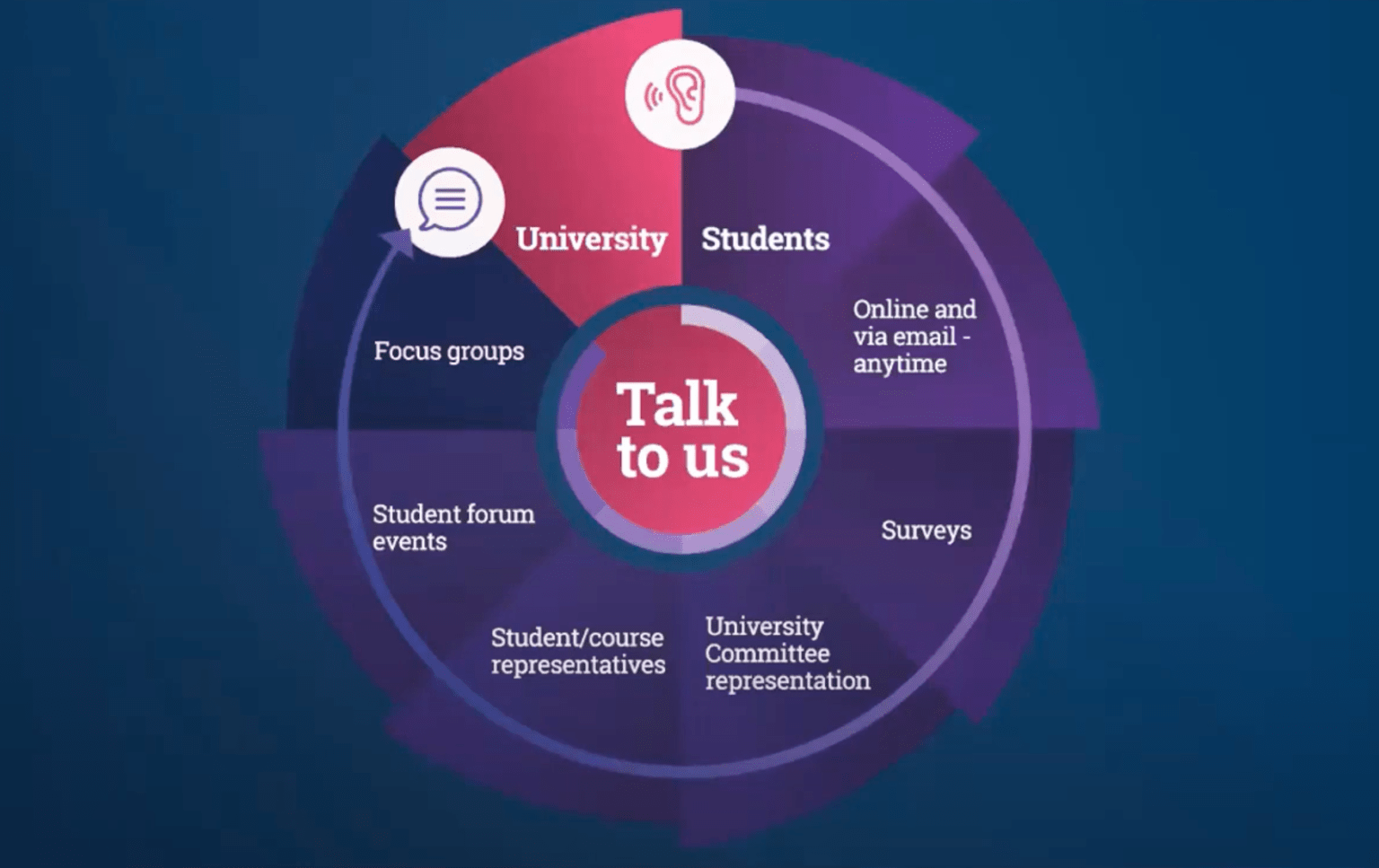
As part of our Closing the Feedback Loop webinar, we spoke to Alison Whaley, the Director of Student Experience at Cranfield University.
Alison discussed the experience she and the university had, and how delivery through a pandemic has changed the institutional framework of engagement.
In this blog we will share her insights on how to effectively close the feedback loop and explore the approach to student voice at Cranfield university.
The student voice
At your university, you need to realise whether the feedback loop is effective or not and begin to think, “How do we let students know what we’re doing?”
Even though students are at the table, are you allowing them to fully engage? Do they feel comfortable contributing to a meeting and do they really understand what happens once they’ve contributed?
Evaluate these things for yourself and it could become clear that you need to better establish a way to say to students, your voice is heard, it matters and we want to hear it.
Creating a visible and active student voice

Alison co-created an infographic with the communications & design teams at Cranfield University, to help students see all the ways that they can engage with university staff. The most important aspect of this graphic is the ear to the speech bubble; when the students talk, staff listen, it goes back to the university and students are communicated what’s changed.
It’s key to use infographics like this to promote the student voice and remind students that it’s a constant throughout their student journey — it helps you establish a visible and active student voice that is truly a University wide initiative.
The first day of lockdown
As Alison said, “there was little time for committees, no time for discussion, no time for task & finish groups or working groups; we had to make decisions now. Agility became incredibly important for our sector.”
The amazing, life-filled campuses closed, tracking students’ whereabouts suddenly became critical and the important questions became, “Where are the students?” and “Are they safe and well?”
Online became the only way, and staff couldn’t create a digital strategy and implement it in five years time — it was, “Do this now, do it tomorrow.”
Picking up the pace
Universities had to move quickly — picking up the pace created risk, but also brought plenty of opportunity, and gave universities a chance to go bigger and better.
However, you might have noticed when making quick changes and decisions it can get confusing for students.
Staff need to understand that when communicating critical information to students, it has to be from a university level, so there is clear messaging and understanding on what’s being asked of them, otherwise you risk confusion and students becoming concerned.
Dealing with students’ concerns
One of the things Alison did at to ease the confusion among students at Cranfield University was to run questions & answers forums. This was to give students opportunities to have their questions answered live, and get to interact directly with senior staff.
She advertised the sessions, focused on offering clarification and status updates, and the headlines would be things like, ‘The Pro Vice Chancellor of education will directly answer your questions’ or ‘We will be joined by the CEO,’ because engagement increases when students realize the time being invested by the University and its staff in speaking with them and actively listening to their concerns and perspective.
Cranfield University’s social media team ran Instagram takeovers that focused on lifting the veil on staff and depts, enabling a conversation, as well as YouTube videos for more serious messages, like reminding students about support and counseling services.
The takeaway is to ensure messages at your university are communicated in different ways, because students have different preferences when it comes to engaging, and we need to ensure the messages are heard by all.
Attaining meaningful student feedback
Many universities in the lockdown situation found they had disengaged students. It’s key to understand why and ensure the reasons were not negative or because students didn’t understand what their options were.
Good feedback has to be representative of all the students, including the ones which aren’t as engaged, because they have a different point of view and valuable insights.
What helped Alison to reach that group of students was the willingness to have difficult conversations and open questions — the webinars she and her University held meant students could submit questions beforehand, but they could also ask live questions.
Sustaining engagement during a pandemic
Universities should explore co-design and co-ownership, as it can offer great opportunities to reach higher levels of engagement and create a group of highly interactive and collaborative students.
Liaison groups, where you engage with a constant set of students on a key topic, is a good way to track students’ journeys and sustain engagement.
Segmentation of student groups and respecting different groups’ unique challenges is also key for increasing your engagement level.
Doing drop-in sessions in Zoom rooms is another good way to get students to ask questions and gain live feedback on a more individual basis. It’s something that staff should continue to do post-pandemic.
Overall, the diverse and open engagement methods that Alison shared, are what allowed her to bolster repeat engagement and ensure students see the genuine intent behind the interactions at Cranfield University. If the students can see the value in the conversation you have with them, both at a course and individual level, they are more likely to continue to engage with you throughout their journey, and establish themselves as advocates or proactive alumni.
